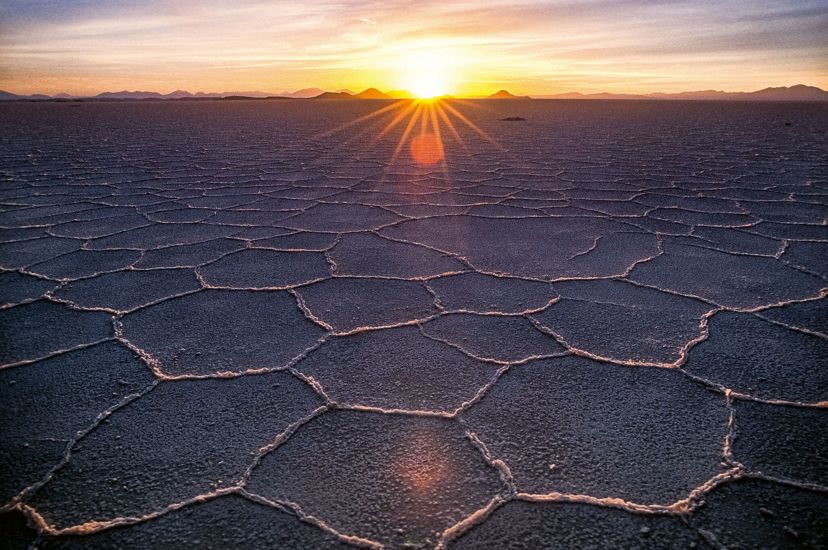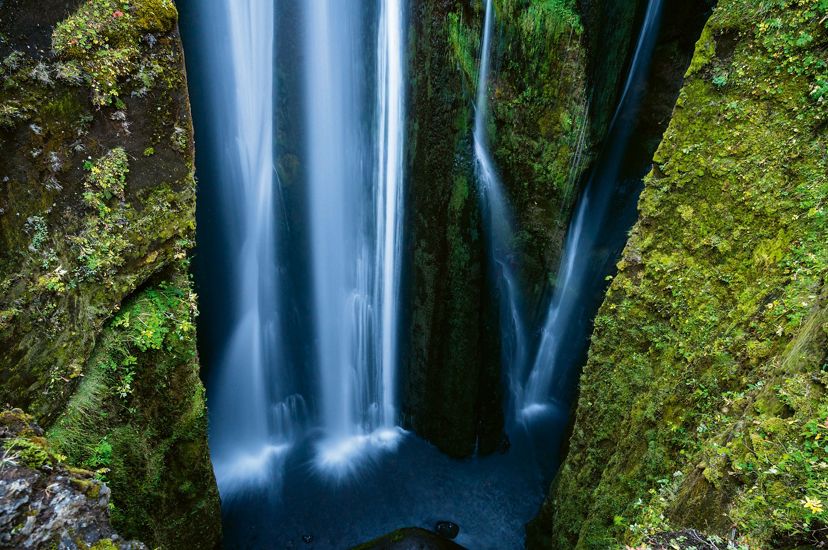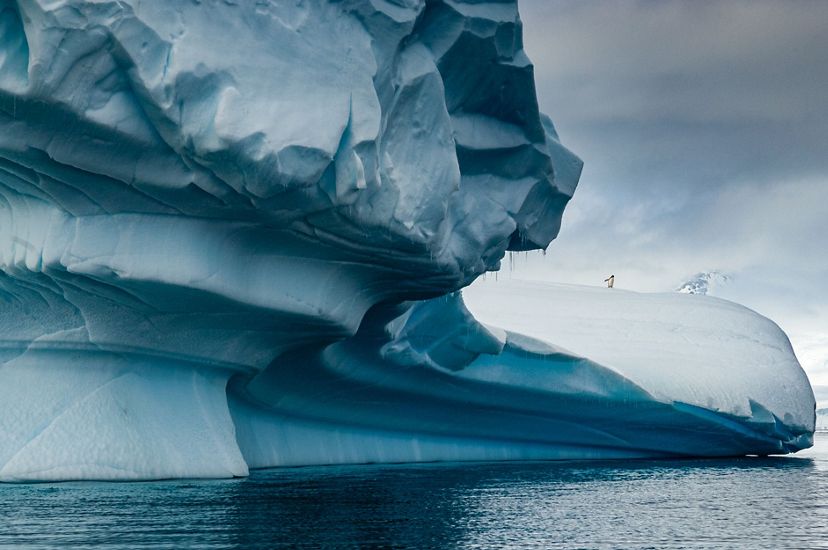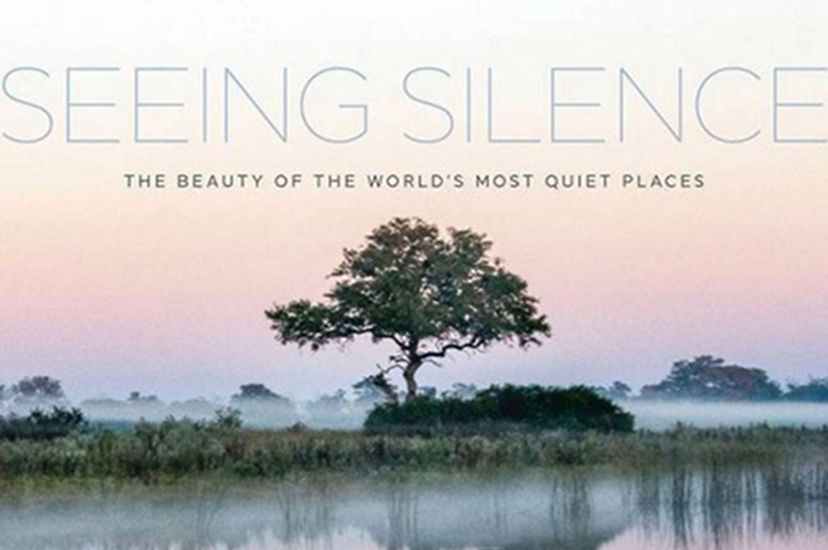A Search for Silence
In a new book, a photographer reflects on the sounds behind his images.
Fall 2021
When you’re standing chest deep in a coffee-colored swamp, facing your darkest fears, you quickly learn how the subtleties of nature’s sounds can freeze you in your tracks and sometimes even save you.
This was supposed to be a moderately safe leg of the trip. I was following British [adventurer] Ed Stafford down a Peruvian stretch of the Amazon River. In an attempt to tackle a new adventure in a world that had already been explored from pole to pole, Stafford, a former British Army captain, was traveling the entire length of the largest river on Earth. On foot. Floating, paddling and even swimming had already been done; walking it—through flooded forests, Indigenous villages and logged hectares—had not. The insanity of the mission had lured media, and in that spirit Men’s Journal sent my writer friend Matt Power and me to tag along.
For three days, we trudged through dense brush and murky waters, quickly realizing that this jungle adventure was bringing us face to face with all our childhood nightmares about swamps and the creatures that crawl there. Everything in sight or lurking in the depths appears poised to harm you. If not a crocodile or schools of piranha, there is the famed candiru, or vampire fish, a parasite alleged to invade the human urethra. I was told it would find its “nest” by the smell of urine. Myth or not, I kept telling myself, don’t pee underwater—nearly impossible as we crossed chest deep from one swampy expanse to the next.
Dry land wasn’t much better. The dense understory was a tangle of creeping vines, lianas and sprawling root systems. Huge trunks shot up through the canopy, draped with strangler figs, giant bromeliads hanging like chandeliers. There were hordes of stinging ants, and spike-covered roots seemed to grow exactly where a handhold was required. The vegetation has evolved with its own deadly micro-specializations: Vines snared our ankles like rubber bands, and thorny tendrils snatched the hats from our heads.
On the ground, leaf litter formed a foot-deep cushion, and there was no sound except the drone of insects and the distant calls of birds. But this astonishing amount of biomass, clawing upward, trying to bridge the gap between the ground and the sunshine above the forest, was so impressive you could almost hear it growing. And then on day three, I heard something different.
I was waist deep in a zone of submerged trees, hopelessly trying to dry my cameras from the stream of sweat pouring off my body, when I heard a subtle swish, something lightly whisking the water. Uncertain of the direction, I scanned everywhere. The others noticed my anxious, frozen stance. Then I saw it. “What the hell is that?” I muttered—not a question you want to be asking in an Amazonian swamp.
The creature had a huge whiskered head, like a catfish, and a bright red mouth and a tail that wound off behind a stump and broke the water 6 feet away. It swam slowly toward me, making the faintest of slithery squishes.
Our tracker, Bernobe Sancha, an Ocaina Indian, eyed the serpent-like thing and explained hurriedly in broken Spanish—anguila, anguila—but none of us knew what the word meant. I became a statue as the thing vanished beneath the surface just 2 feet from me. I held my breath and felt a soft current move against my legs. I swallowed the impulse to scream. A deep hush descended over the surrounding jungle, as if everything was holding its breath. And then the birds started up again, and I noticed the steady drone of insects.
After what felt like an eternity, Bernobe motioned me with his slender arms to the shore. There, in a mix of Spanish and his native tongue, he told me that my stillness saved me. It had been an enormous electric eel, which, we’d learn later, could have generated a 600-volt shock, powerful enough to knock us all unconscious, face down in the water. Electric eels, Bernobe said, react to movement. He pointed to his ear and said, “Tienes buenas orejas—you have good ears. Listening protects you in the jungle.”
That night, after my adrenaline climbed down out of the jungle canopy, I crawled into my hammock and zipped myself in. Thousands of mosquitoes tapped against the netting, probing for an entrance. The cough-like whoops of howler monkeys echoed in the distance. Then a low hiss built and built, until the temperature dropped and the rain opened up like a jet taking off, drowning all other sound, enshrouding the night.
Eventually, both Matt and I learned to accept the surroundings and fight them less. With time, we adjusted to the mud, humidity, sweat and bug bites. While this Amazon journey was one of my hardest assignments, both physically and mentally, it was also transformative.
On our last day, we crossed a section of forest that had recently been logged. Without the protective shade of the canopy, the sun seared us. The buzz and hum of life that I’d just started to appreciate was gone. The deforested plot was as empty of sounds as it was of trees.
In the last few years, 12 million hectares of rainforest have been cleared per year. That is the equivalent of clearing out four New York City Central Parks an hour—24 hours a day, 52 weeks a year.
Before I left, Bernobe shared some more wisdom with me. The forest communicates more with sounds than with sights, he said. When you learn how to quietly listen, the more you see. And the longer you live.
Crashing Roar
Waterfalls fill Iceland’s landscapes, helping to carve this island full of gurgling glacial rivers and deep fjords. “What fascinates me most about the silence of nature,” McBride writes, “is that it can be pin-drop quiet one second and wonderfully loud the next.”
Quiet Starlight
The growth of social media, McBride writes, has made natural formations in America’s national parks popular tourist spots—their quiet wilderness interrupted by the whirring of cameras. Instilling Leave No Trace ethics, and not revealing photo locations, can help protect places like this double arch in Arches National Park in Utah, from being “loved to death,” he writes.
Southern Choir
On an island off Antarctica an Adélie penguin scans for predators. In the Southern Ocean, the cacophony of squawking penguin colonies joins the barks of seal pups and the trumpets of seabirds—and the thunderous crash of iceberg chunks falling into the sea. Adélies, which mate for life and know their partners by sound, McBride writes, have begun migrating south in search of more consistent sea ice.





